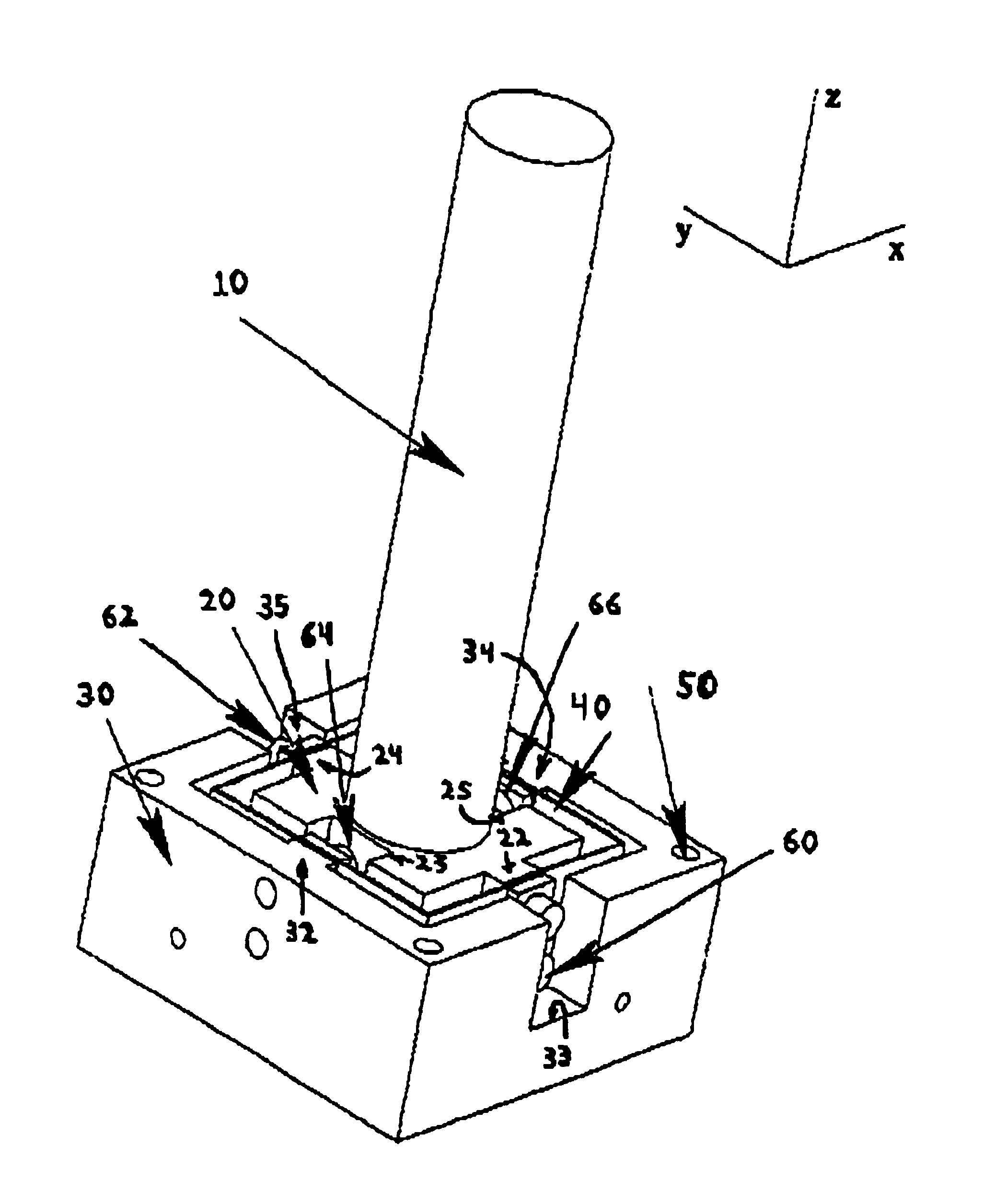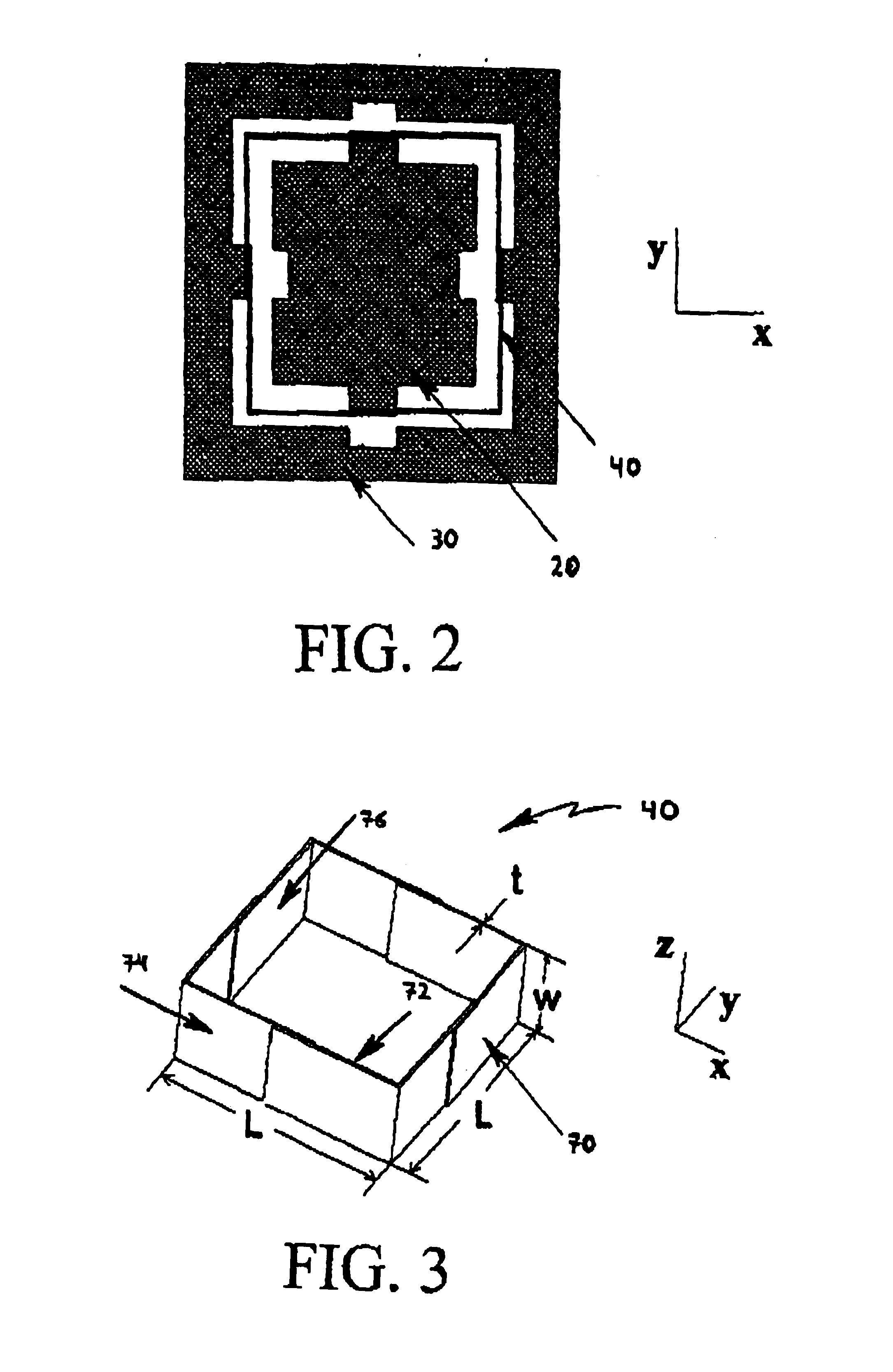Force sensors
a technology of force sensors and sensors, applied in the field of force sensors, can solve the problems of high cost, high cost, and high cost of force sensors based on conventional strain gauges, and achieve the effect of low stiffness
- Summary
- Abstract
- Description
- Claims
- Application Information
AI Technical Summary
Benefits of technology
Problems solved by technology
Method used
Image
Examples
Embodiment Construction
[0049]One embodiment of a force sensor of the present invention as shown in FIG. 1 is used to measure forces applied along different directional axes. This embodiment is particularly designed to accommodate manual control input from a human operator.
[0050]Generally, a force to be measured has components along three axes, the x, y and z axes. In addition, the force to be measured may be a torque or movement about the x, y or z axis. A force sensor may measure these six components of force / torque or a subset thereof. It is noted that as used herein, the term force includes torque about one or more axes as well as force components along one or more axes.
[0051]An embodiment of a two-axis force sensor as shown in FIG. 1 includes a first member 20, and second member 30, and a flexure 40 positioned between the first member 20 and the second member 30. For purposes of the following embodiments, the first member 20 is preferably an inner member 20 while the second member 30 is preferably an ...
PUM
| Property | Measurement | Unit |
|---|---|---|
| distance | aaaaa | aaaaa |
| displacement | aaaaa | aaaaa |
| aspect ratio | aaaaa | aaaaa |
Abstract
Description
Claims
Application Information
 Login to View More
Login to View More - R&D
- Intellectual Property
- Life Sciences
- Materials
- Tech Scout
- Unparalleled Data Quality
- Higher Quality Content
- 60% Fewer Hallucinations
Browse by: Latest US Patents, China's latest patents, Technical Efficacy Thesaurus, Application Domain, Technology Topic, Popular Technical Reports.
© 2025 PatSnap. All rights reserved.Legal|Privacy policy|Modern Slavery Act Transparency Statement|Sitemap|About US| Contact US: help@patsnap.com



